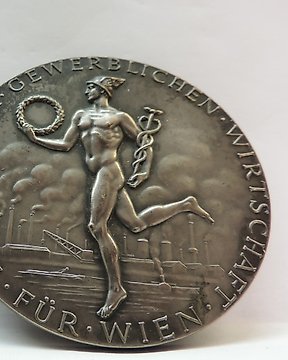
Ausztria. Enorme Medaglia 1963 economia industriale (Nincs minimálár)
Nr. 84191225

Nr. 84191225

KM# 2853 5 SCHILLING 1935 Nice quality
15.00 g., 0.835 Silver 0.4027 oz. ASW, 31 mm. Obv: Haloed double eagle with Austrian shield, value Rev: Standing �gure of Madonna of Mariazell, date below Edge: Lettered
Please have a look at our other Catawiki auction lots for more coin collections. and/or add us to your favourites to find our future auction lots easily.
Bid with confidence. AG-Worldcoins, over 3000 lots sold on Catawiki. High feedback score.
Please evaluate this lot with reference to the images provided.
Will be sent via registered mail.
I charge only 1x shipping costs when you buy multiple lots in the same auction.
You are welcome to bid on my other items:
https://veiling.catawiki.nl/aanbod/hamaca
Extra info:
The Republic of Austria, a parliamentary democracy located in mountainous central Europe, has an area of 32,374 sq. mi. (83,850 sq. km.) Capital: Wien (Vienna). Austria is primarily an industrial country. Machinery, iron, steel, textiles, yarns and timber are exported.
The territories later to be known as Austria were overrun in pre-Roman times by various tribes, including the Celts. Upon the fall of the Roman Empire, the country became a margravate of Charlemagne’s Empire. Premysl II of Otakar, King of Bohemia, gained possession in 1252, only to lose the territory to Rudolf of Habsburg in 1276. Thereafter, until World War I, the story of Austria was conducted by the ruling Habsburgs.
During the 17th century, Austrian coinage reflected the geo-political strife of three wars. From 1618-1648, the 'Thirty Years’ War between northern Protestants and southern Catholics produced low quality, “kipperwhipper” strikes of 12, 24, 30, 60, 75 and 150 Kreuzer. Later, during the Austrian-Turkish War, 1660-1664, coinages used to maintain soldier’s salaries also reported the steady division of Hungarian territories. Finally, between 1683 and 1699, during the second Austrian-Turkish conflict, new issues of 3, 6 and 15 Kreuzers were struck, being necessary to help defray mounting expenses of the war effort.
During World War I, the Austro-Hungarian Empire was one of the Central Powers with Germany, Bulgaria and Turkey. At the end of the war, the Empire was dismembered and Austria established as an independent republic. In March 1938, Austria was incorporated into Hitler’s short-lived Greater German Reich. Allied forces of both East and West occupied Austria in April 1945, and subsequently divided it into 4 zones of military occupation. On May 15, 1955, the 4 powers formally recognised Austria as a sovereign independent democratic state. Franz Joseph I, 1848-1916 Karl I, 1916-1918
Hogyan vásárolhatok a Catawiki-n?
1. Fedezzen fel valami különlegeset
2. Tegye meg a legmagasabb licitet
3. Fizessen a biztonságos és védett rendszert használva